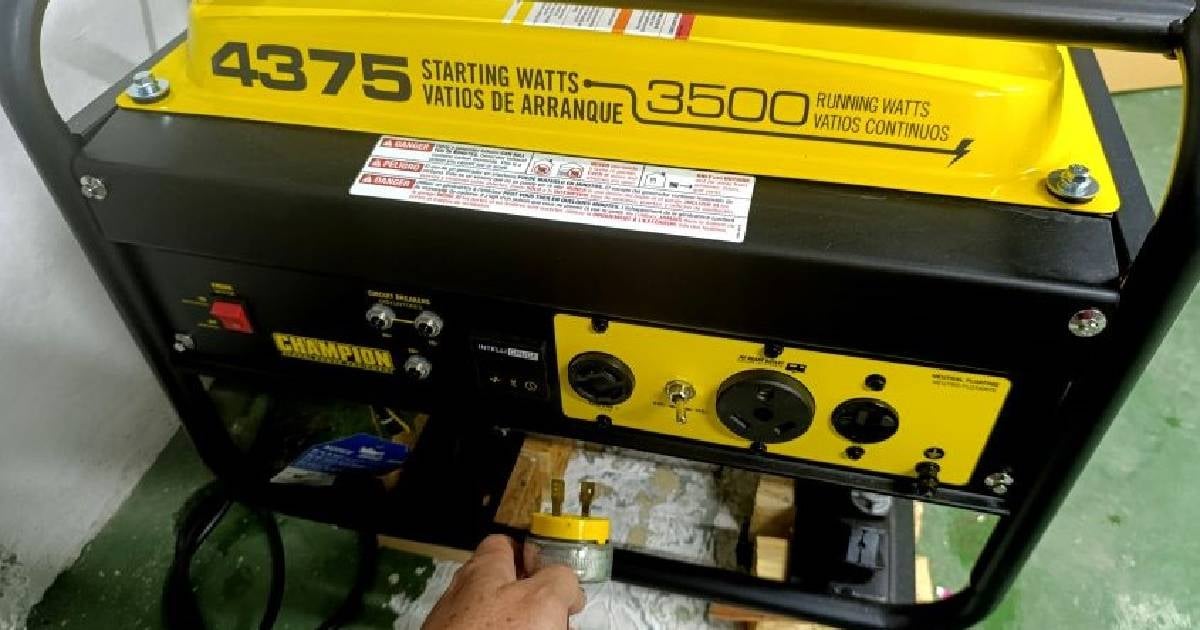In Las Tunas and across Cuba, the relentless power outages have made portable generators a common yet perilous solution. Misuse of these devices, driven by misinformation and fear of theft, has led to tragic deaths from carbon monoxide poisoning.
Despite past tragedies, warnings remain scarce, turning each blackout into a silent gamble for those just trying to sleep with a light on. The official newspaper 26 reported on a woman named Elia from Las Tunas. After much effort to acquire a generator and gasoline—another obstacle on her path to "civilization"—she set it up in a small enclosed patio next to her bedroom window.
Like many, she prioritized theft prevention over avoiding poisoning, unaware of the dangers of using fossil fuel-powered generators. "No one warned her of the risks," the publication noted. Although these devices do not emit smoke or noticeable odors, all of them release carbon monoxide, known as the "invisible killer."
This lack of awareness is not isolated. In overcrowded neighborhoods, the improper use of these generators has become normal. The fear of theft forces people to place them close to homes, exposing entire families—and their neighbors—to poisoning.
According to reports, Las Tunas has a grim history of carbon monoxide poisonings, causing immense grief to numerous families. In August 2024, a 30-year-old Cuban man and his two-year-old daughter died in Amancio due to improper generator use.
This tragedy should have been a wake-up call, but warnings remain sporadic, and the issue is underestimated. The Federal Emergency Management Agency (FEMA) in the United States, where many of these generators originate, advises using them only outdoors, at least six meters from doors and windows, and warns against relying on fans to disperse the gas.
Additionally, FEMA warns that a single generator can emit as much carbon monoxide as 450 cars, primarily affecting the brain and heart. Key symptoms include headaches, weakness, dizziness, nausea, confusion, blurred vision, and drowsiness, potentially causing brain damage or death before anyone realizes there's a problem.
Cuba has an unresolved issue with prevention. The vulnerability of those who survived COVID-19, especially the elderly, and high population density make it urgent to address this threat seriously.
"It's concerning that alerts are not consistent when health authorities are aware of these 'times of darkness,'" stated 26. "Approaching the phenomenon with caution is about protecting the people we care about."
However, as long as information remains limited, oversight lax, and fear of theft prevalent, the danger will continue to loom during each blackout, unnoticed until it's too late.
Since 2022, energy generator shipments to Cuba from the United States have increased following the escalation of blackouts and new import regulations by Cuba's General Customs. These imports are crucial amid the deepening energy crisis in the country, affecting both residential and business sectors, including private enterprises.
Recently, a group of residents from Reparto Eléctrico in Havana had to bring a personal generator to the local clinic so a patient could undergo an electrocardiogram due to a total lack of electricity and emergency resources.
In recent weeks, Cuba has faced an intensified power crisis. On Saturday, July 5th, the Unión Eléctrica (UNE) reported that the country experienced electrical service disruptions for the entire 24 hours of Friday, with a maximum recorded disruption of 1685 MW.
Understanding the Risks of Portable Generators in Cuba
Why are portable generators dangerous in Cuba?
Portable generators pose a risk in Cuba due to carbon monoxide emissions, a colorless and odorless gas that can cause poisoning if the generator is used indoors or too close to living spaces.
What safety precautions should be taken when using a generator?
Generators should always be used outdoors, at least six meters away from doors and windows, and never in enclosed spaces. It's crucial not to rely on fans to disperse the gas.
How does carbon monoxide affect the body?
Carbon monoxide primarily affects the brain and heart. Symptoms include headaches, dizziness, nausea, confusion, and blurred vision, which can lead to brain damage or death if not addressed promptly.
